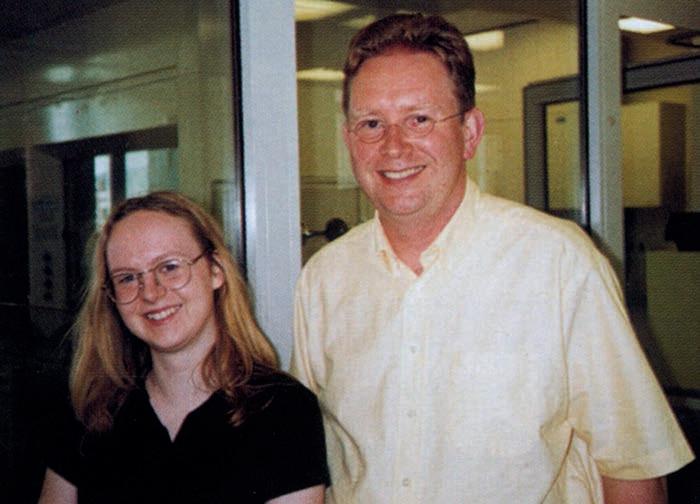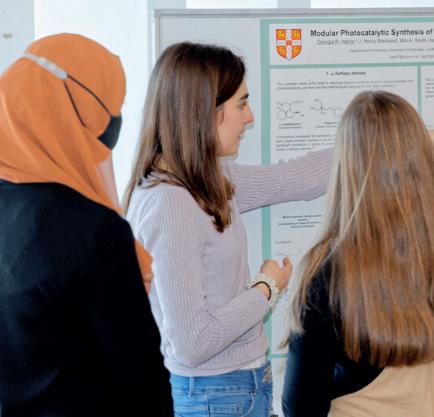
3 minute read
Careers in medical science
Catch up with these alumni who are now early career researchers in medicinal chemistry, and nd out how their PhDs at Cambridge have prepared them for drug discovery.
SYGNATURE DISCOVERY
Dr Andrew Phillips at Sygnature Discovery.
Dr Andrew Phillips
Group: Professor Ian Paterson Thesis: Studies Towards the Total Synthesis of Patellazole B
After his PhD in synthetic chemistry, Andrew Phillips wanted to transfer into a medical chemistry role and Sygnature Discovery, a drug discovery service, was a great option. At Sygnature, Andrew has worked on Non-Hodgkin’s Lymphoma and Cushing’s syndrome drugs.
These drugs are still being tested in later stages of drug development and Phillips says it is rewarding to be part of the drug discovery process.
Whilst the pace and practice of Sygnature is di erent from academia, Andrew says his time at Cambridge put him in a good position to enter the role. He has also returned to Cambridge to host workshop days and practise interviews for careers in medicinal chemistry for current PhD students.
“My PhD was very synthetic chemistry oriented, and total synthesis gave me a broad education which was the perfect training for going into medical chemistry. Really, medical chemistry is best learnt on the job, and synthesising molecules can be as much of an art as a science,” he says.
Aside from punting along the river, Andrew spent his time at Cambridge working towards elucidating the structures of patellazoles; a family of natural marine molecules that are toxic to human colon tumour cells. As a member of the Paterson group, he developed a route towards Patellazole B which has particularly high potency. He believes this gave him the experience and interest in pursuing medicinal chemistry further.

ASTRAZENECA
Carolina Orozco at AstraZeneca.
Dr Carolina Orozco
Group: Professor Sophie Jackson Thesis: From antibody-drug conjugates to masked antibodies: biophysical insight for the rational design of future therapies
Carolina Orozco had the great fortune to study a PhD that fed into her rst job. She describes her transition from academia in Sophie Jackson’s group to industry at the labs in Granta Park with AstraZeneca.
During her time in the Jackson group, Carolina compared di erent antibody masks to de ne some of the di erent features of successful masks. Antibody therapy is often used in treating cancers, where a drug is attached to an antibody that will tightly bind to a cancer cell expressing a speci c antigen.
Antibodies are designed to ght one speci c antigen, such as a receptor on a virus, but they are not tissue-selective. This means that the antibody will always bind to this antigen even if it is found in healthy tissue, even at low levels. Drug designers want to prevent the antibodies they make from a ecting healthy tissue and reduce unpleasant side e ects. One method to make the antibody drug delivery more speci c is to place a mask over speci c chain of proteins in the antibody. This is a small protein that covers up the antibody binding site that can only be removed by enzymes present within the tumour which cleave the linker between the mask and the antibody. Healthy cells can’t remove the mask and stay safe.
“Designing a mask is not a trivial question,” comments Carolina, “It needs to combine two antagonistic concepts; it must stay bound on the protein to inactivate whilst the linker is intact, but also come o the protein at the right point. The mask has to cover the binding site and come o when it nds a tumour.”
To nd the perfect balance, Carolina tested three di erent masking candidates with di erent masking properties and found that a medium a nity had the most success as a mask because it can be removed quickly. A high a nity mask would adhere to the drug successfully but then never come o .
Carolina is now applying the skills she’s learnt around protein production and biophysics at AZ.










